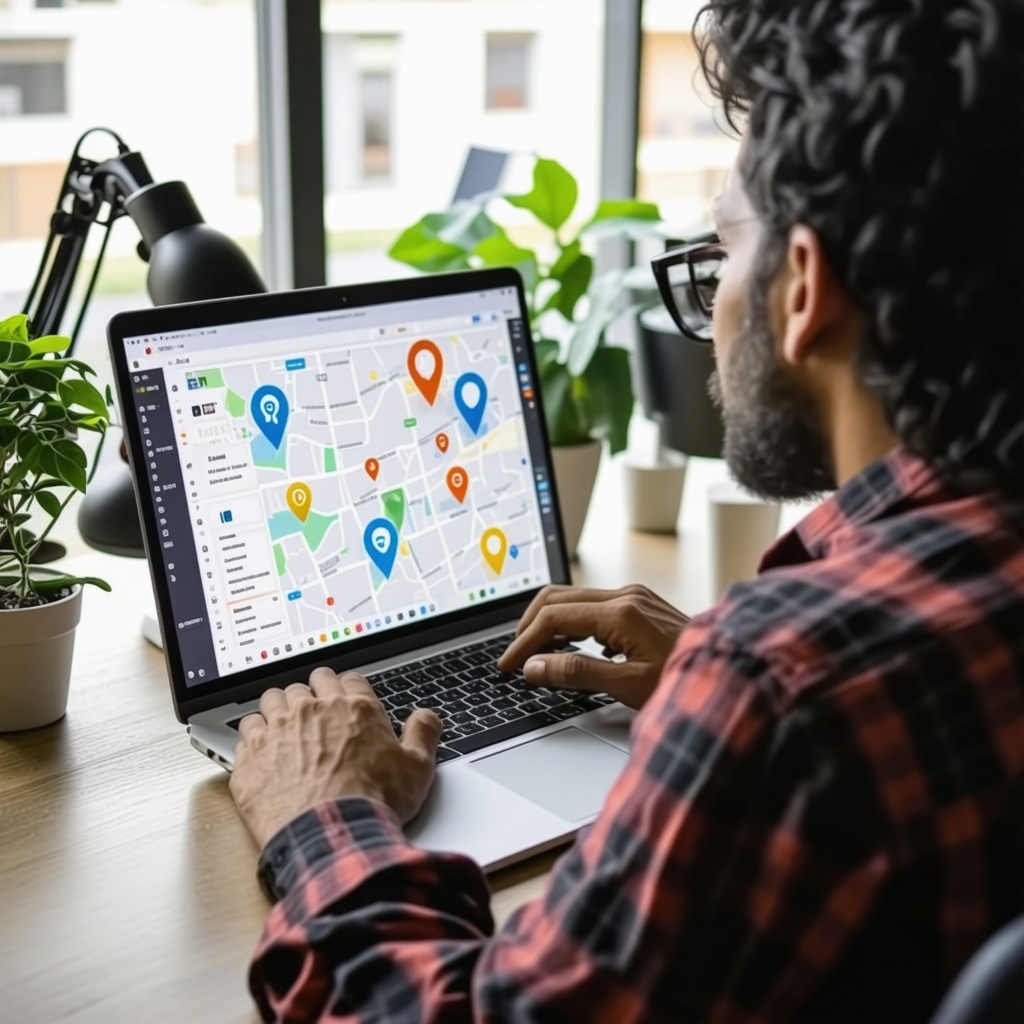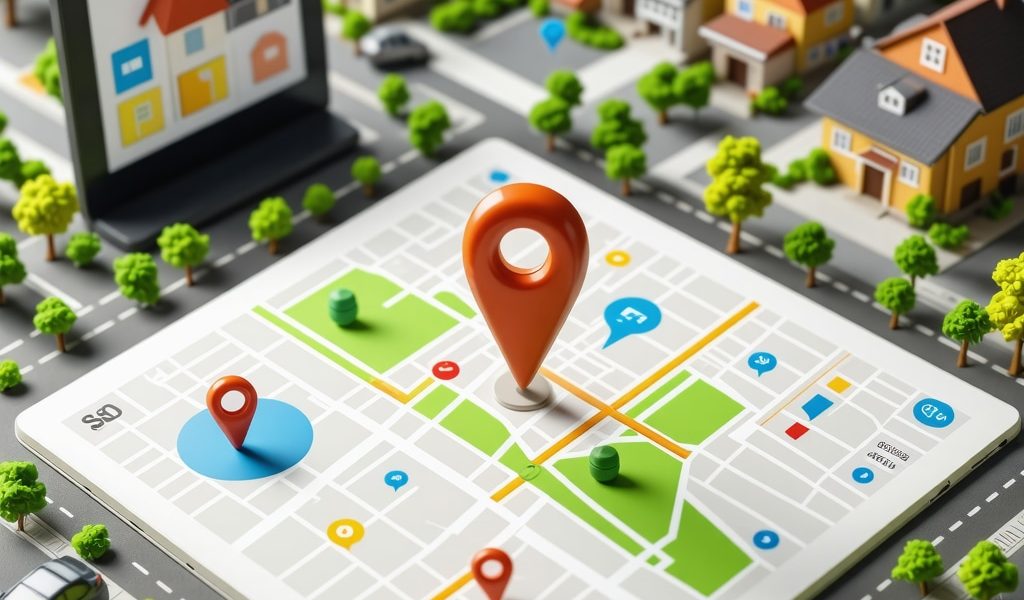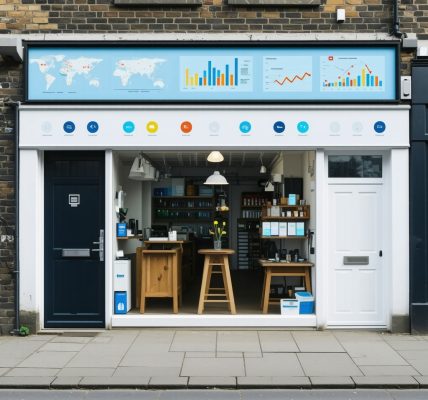Unlocking the Power of Hyperlocal SEO for Service-Area Businesses
In the fiercely competitive digital landscape, service-area businesses face unique challenges in capturing local customers who need their services nearby but may not physically visit a storefront. Hyperlocal SEO emerges as a precision tool to bridge this gap, focusing on optimizing online presence to reach potential clients within very specific geographic boundaries. This quick guide unpacks the strategies essential for service-area businesses to dominate local search results, connect authentically with their community, and convert local intent into measurable growth.
Precision Targeting: The Art of Hyperlocal Keyword Optimization
Unlike broad local SEO, hyperlocal SEO drills down to neighborhoods, districts, or even streets. The key lies in integrating ultra-specific keywords that reflect how customers search for services within micro-locations. For instance, a plumbing service might optimize for “emergency plumber near [neighborhood name]” or “24/7 drain cleaning in [specific suburb].” Employing tools like Google Keyword Planner to uncover these granular search terms empowers businesses to tailor content, meta descriptions, and Google Business Profile attributes to hyperlocal queries effectively.
Google Business Profile Strategies: Your Hyperlocal Visibility Catalyst
Service-area businesses must maximize their Google Business Profile (GBP) to enhance hyperlocal rankings. This includes meticulously updating service areas, leveraging localized descriptions, and frequently posting relevant content that resonates with the immediate community. Engaging customers through reviews that mention specific neighborhoods or landmarks not only boosts trust but also reinforces location relevance in Google’s algorithms. For advanced tactics, businesses can explore dedicated local SEO services focused on hyperlocal SEO guide to target nearby customers effectively.
How Can Service-Area Businesses Leverage Local Citations and Reviews for Hyperlocal Dominance?
Local citations—mentions of your business name, address, and phone number on local directories and niche sites—are a cornerstone of hyperlocal SEO. Ensuring consistent and accurate citations across platforms builds authority and trust with search engines. Coupled with a proactive review generation strategy that encourages customers to highlight specific service locations, businesses can amplify their local relevance. For example, a landscaping company might request reviews mentioning “garden design in [specific neighborhood],” which significantly enhances localized search visibility. Implementing expert citation management and proven review generation techniques can be explored further at proven methods for GMB review generation and local trust.
Harnessing Geo-Targeted Content and Mobile Optimization
Content crafted with a hyperlocal lens—such as blog posts on neighborhood events, local case studies, or service success stories tied to specific areas—builds community trust and search engine relevance. Combining this with mobile optimization is critical, as most hyperlocal searches occur on smartphones by users seeking immediate solutions nearby. Fast-loading, mobile-friendly websites with embedded Google Maps and clear service-area indicators markedly improve user experience and local ranking signals.
Experience Meets Expertise: Case Study Insights
Consider a local HVAC service that applied hyperlocal SEO by targeting micro-neighborhoods with tailored ads, optimized GBP profiles, and localized content campaigns. Within six months, they witnessed a 40% increase in qualified leads from their designated service zones, underscoring how hyperlocal SEO translates into tangible business growth. This exemplifies practical experience validating the strategic nuances discussed.
For businesses eager to deepen their knowledge, authoritative insights from Moz’s comprehensive local SEO research offer extensive validation of these strategies: Moz’s Local SEO Best Practices.
Curious about optimizing your Google Business Profile effectively for service-area success? Explore our detailed guide on how to optimize your Google Business Listing effectively to elevate your hyperlocal SEO game.
If this guide sparked ideas or questions, don’t hesitate to reach out or share your experiences to help others in the community thrive.
The Unexpected Power of Customer Stories in Hyperlocal SEO
One thing I discovered over time while working with service-area businesses is how profoundly customer stories can amplify your hyperlocal SEO efforts. When a local client shares a detailed story about how your service saved the day in a specific neighborhood, it does more than just build credibility — it naturally embeds localized keywords and landmarks that search engines love. I remember helping a cleaning service encourage clients to share experiences mentioning their neighborhood, like “spotless carpets in Eastwood,” which then translated into a noticeable rise in local inquiries.
Integrating Local Partnerships: A Win-Win for SEO and Community
Another approach I found invaluable is partnering with other local businesses for cross-promotion. These collaborations often create new citation opportunities and backlinks that are gold for hyperlocal SEO. For example, a roofing company I worked with teamed up with a local hardware store to co-host an online workshop. This not only increased their digital footprint but also fostered genuine community engagement, reinforcing local authority in Google’s eyes.
How Can You Make Hyperlocal SEO Feel Authentic and Not Just a Marketing Tactic?
Authenticity in hyperlocal SEO is crucial. From my experience, it stems from genuinely engaging with the community — responding thoughtfully to reviews, participating in local events, and creating content that reflects real neighborhood concerns or celebrations. It’s about telling your business’s story in ways that resonate locally, not just stuffing keywords. This approach builds trust with both customers and search engines.
Leveraging Data Analytics to Refine Your Hyperlocal Focus
One of the most eye-opening lessons was realizing how data analytics could sharpen hyperlocal strategies. Using insights from tools like Google My Business analytics and website traffic reports helped identify which neighborhoods or service areas generated the most interest. This allowed precise resource allocation, such as launching targeted ad campaigns or updating GBP content focusing on high-performing zones. If you want to dive deeper into optimizing your Google Business Profile with data-driven keyword insights, check out this Google Business Keyword Strategy guide.
Why Consistency in Local Citations is Non-Negotiable
Over the years, I’ve seen that inconsistent citations can seriously undermine your hyperlocal SEO gains. Even minor discrepancies in your business name, address, or phone number across directories confuse search engines and erode trust. I always recommend conducting regular audits and employing expert citation management services to maintain uniformity. This ensures your business appears authoritative and trustworthy across all local platforms, which is vital for ranking well in hyperlocal searches.
If you’re eager to explore more about managing local citations effectively, I’ve found these effective GMB citation management strategies incredibly useful.
Have you experimented with hyperlocal SEO tactics in your service-area business? I’d love to hear your stories or challenges in the comments below. Sharing experiences helps us all learn and grow together in this ever-evolving digital landscape.
Decoding Behavioral Signals: The Next Frontier in Hyperlocal SEO
While traditional hyperlocal SEO tactics focus on keywords, citations, and content localization, a more sophisticated approach involves interpreting behavioral signals from your local audience. Search engines increasingly weigh user engagement metrics—such as click-through rates, dwell time, and repeat visits—to refine local rankings. By analyzing these behaviors using tools like Google Analytics and heatmap software, service-area businesses can fine-tune their hyperlocal strategies to align with actual user intent and preferences.
For example, if data reveals that visitors from a specific neighborhood frequently explore your HVAC emergency services page but bounce quickly from other pages, it signals a need to tailor content or calls-to-action more precisely for that area. Additionally, behavioral insights can guide geo-targeted promotions and content updates, ensuring that every touchpoint resonates with the micro-community’s unique needs.
How Can Semantic Search and Natural Language Processing Revolutionize Hyperlocal SEO?
Emerging search technologies like semantic search and natural language processing (NLP) are reshaping how hyperlocal SEO operates. Instead of merely matching keywords, search engines now interpret the context, intent, and nuances behind queries. This means that your content must move beyond repetitive location phrases to incorporate natural, conversational language that reflects how locals discuss their neighborhoods and services.
By integrating semantic SEO tactics—such as using related terms, synonyms, and context-rich narratives—you enhance your chances of capturing featured snippets and voice search queries, which are increasingly common in local mobile searches. For deeper insights, Moz’s research on Semantic SEO and Local Search provides an expert-level breakdown of these concepts.
Harnessing AI-Driven Content Personalization for Micro-Communities
Advanced service-area businesses are now leveraging AI-powered tools to dynamically personalize website content based on a visitor’s geographic location or browsing behavior. This hyper-personalization can manifest as customized landing pages, tailored service recommendations, or localized testimonials that instantly resonate with the visitor’s environment.
For instance, a plumbing company’s website might automatically display emergency contact details and service offers specific to the visitor’s suburb, creating a seamless and highly relevant user experience. This level of precision not only increases conversion rates but also reinforces your business’s authority and relevance in each micro-market.
Integrating AI personalization requires a blend of technical expertise and strategic content planning, but the payoff in hyperlocal engagement is substantial.
Advanced Link Building: Cultivating High-Value Local Authority
Beyond standard citation management, cultivating high-quality backlinks from authoritative local sources is a game-changer for hyperlocal SEO. Collaborations with local news outlets, community blogs, and respected organizations can yield backlinks that significantly boost your service-area business’s domain authority and trustworthiness in Google’s eyes.
Proactively creating or sponsoring hyperlocal content such as neighborhood guides, event recaps, or educational workshops can generate organic backlink opportunities. Additionally, participating in local digital forums and chambers of commerce websites often opens doors to valuable link placements that are contextually and geographically relevant.
Employing advanced backlink analytics tools, like Ahrefs or SEMrush, allows you to identify and target the most impactful local linking opportunities, ensuring your efforts deliver measurable SEO benefits.
If you’re ready to refine your link-building strategy for hyperlocal domination, explore our comprehensive resource on Advanced Local Link Building Techniques.
Crafting Interactive Local Experiences: Beyond Static Content
To truly engage hyperlocal audiences, service-area businesses are innovating with interactive content formats. Interactive maps highlighting completed projects, neighborhood-specific FAQs, and localized chatbot assistants provide immersive experiences that keep users engaged longer.
For instance, a landscaping service could embed a dynamic map showcasing gardens designed in various neighborhoods, coupled with customer testimonials and before-and-after sliders. Such interactive elements not only improve dwell time—a positive ranking factor—but also foster deeper connections with prospective clients by illustrating tangible local impact.
Implementing these features requires thoughtful UX design and content strategy but sets your business apart as a forward-thinking leader in your hyperlocal market.
Integrating Offline Community Engagement with Digital Hyperlocal SEO
While digital strategies are indispensable, the synergy between offline community involvement and online hyperlocal SEO cannot be overstated. Hosting or sponsoring local events, participating in neighborhood initiatives, and even traditional direct mail campaigns that drive online engagement can create authentic brand presence and generate user-generated content and reviews.
Encouraging attendees to share their experiences on social media or review platforms with neighborhood-specific keywords amplifies your hyperlocal SEO impact. This real-world authenticity enriches your digital footprint in ways algorithmic tactics alone cannot achieve.
Looking to weave offline and online efforts seamlessly? Our expert guide on Integrated Local Marketing Strategies offers actionable insights.
Dissecting User Intent: Elevate Hyperlocal SEO with Behavioral Analytics
Understanding not just where your customers are but why they seek your services locally transforms hyperlocal SEO from a mechanical exercise into a strategic art. Behavioral analytics tools such as Hotjar and Google Analytics reveal nuanced user journeys, enabling businesses to tailor content that anticipates and satisfies micro-community needs. By identifying patterns like page exit points or frequently accessed service pages per neighborhood, marketers can optimize calls-to-action, refine landing pages, and craft bespoke offers that resonate authentically with targeted hyperlocal demographics.
What Role Does Advanced Behavioral Segmentation Play in Refining Hyperlocal SEO Strategies?
Advanced behavioral segmentation involves categorizing visitors based on their interaction patterns, geographic data, and intent signals, allowing businesses to deploy hyper-focused SEO tactics. For instance, segmenting users who repeatedly visit emergency service pages from a particular suburb can inform geo-targeted PPC campaigns or bespoke content creation. Leveraging machine learning models to predict high-value micro-markets within your service area further amplifies conversion potential. This sophisticated approach aligns with insights from Search Engine Journal’s analysis on behavioral segmentation in local SEO, underscoring its pivotal role in modern hyperlocal dominance.
Implementing Voice Search Optimization: A Frontier for Local Discovery
The proliferation of voice-activated assistants has redefined how consumers conduct hyperlocal searches, often using conversational queries that differ markedly from typed keywords. Service-area businesses must adapt by incorporating natural language phrases, question-based content, and featured snippets optimization to capture this growing segment. For example, optimizing for queries like “Who offers reliable emergency plumbing in [neighborhood]?” or “Best HVAC services near me open now” taps into voice search behavior, enhancing discoverability and engagement.
Dynamic Schema Markup: Structuring Hyperlocal Data for Search Engines
Integrating advanced schema markup tailored to local business attributes significantly enriches search engine understanding of your service areas and offerings. Employing LocalBusiness and Service schema with precise geo-coordinates, service radius, and operating hours feeds Google’s Knowledge Graph, resulting in enhanced SERP features such as rich snippets and map pack prominence. This granular data structuring is crucial for hyperlocal visibility, especially in competitive markets.
For an authoritative deep dive into schema implementation, Google’s official documentation on Local Business structured data provides exhaustive guidelines and best practices.
Balancing Automation and Authenticity in Hyperlocal Engagement
While AI-driven tools streamline content personalization and data analysis, maintaining authentic community engagement remains paramount. Over-automation risks producing generic or impersonal touchpoints that alienate local audiences. Strategically blending AI efficiency with human oversight—such as personally responding to hyperlocal reviews or curating neighborhood-specific content narratives—ensures your SEO efforts resonate genuinely, cultivating long-term customer loyalty and organic advocacy.
Unlocking Hyperlocal SEO Synergies Through Cross-Channel Integration
Maximizing hyperlocal impact requires harmonizing SEO efforts with complementary digital channels like social media, email marketing, and local influencer collaborations. Coordinated campaigns that echo consistent neighborhood-centric messaging foster multi-touch attribution benefits, elevating local brand awareness and authority. Additionally, leveraging geo-fenced social ads alongside hyperlocal SEO creates a virtuous cycle of engagement, reinforcing your presence within the micro-market.
If you’re ready to pioneer these advanced hyperlocal strategies and transform your service-area business’s digital footprint, connect with our hyperlocal SEO experts today to unlock tailored solutions designed for precision growth.

Frequently Asked Questions (FAQ)
What exactly is hyperlocal SEO and how does it differ from traditional local SEO?
Hyperlocal SEO focuses on optimizing online visibility within very narrow geographic boundaries such as neighborhoods, blocks, or specific suburbs, whereas traditional local SEO targets broader areas like cities or regions. This micro-targeting enables service-area businesses to connect with customers searching for services in their immediate vicinity, increasing relevance and conversion potential.
How can service-area businesses optimize their Google Business Profile for hyperlocal success?
Businesses should meticulously define their service areas within GBP, use localized descriptions with neighborhood-specific keywords, regularly update posts relevant to local events or issues, and actively solicit reviews that mention particular micro-locations or landmarks. This enhances hyperlocal relevance and trust signals to Google.
Why are local citations critical for hyperlocal SEO and how should they be managed?
Consistent and accurate local citations across directories and niche platforms build authority and affirm your business’s location and contact details to search engines. Regular audits and expert citation management prevent discrepancies that could confuse algorithms, ensuring stronger local rankings.
How does behavioral analytics improve hyperlocal SEO strategies?
By analyzing user interactions, geographic data, and intent signals through tools like Google Analytics and heatmaps, businesses can identify which neighborhoods generate the most engagement and optimize content, CTAs, and campaigns accordingly. This data-driven approach aligns offerings with real user needs and increases conversion efficiency.
Can AI-driven content personalization enhance hyperlocal marketing efforts?
Yes. AI tools can dynamically tailor website content, offers, and testimonials based on a visitor’s precise location or browsing behavior, creating highly relevant experiences that boost engagement and conversion. However, balancing automation with authentic human interaction is essential for maintaining trust.
What role do customer stories play in strengthening hyperlocal SEO?
Authentic customer narratives that mention specific neighborhoods or local landmarks naturally embed localized keywords and build credibility. These stories resonate with both search engines and prospective clients by reflecting genuine community experiences, thereby improving local search visibility.
How can service-area businesses leverage offline community engagement for online SEO benefits?
Participating in or sponsoring local events, encouraging attendees to share reviews or social media posts mentioning specific neighborhoods, and collaborating with community partners generate authentic user-generated content and backlinks. This offline-online synergy enriches digital presence and bolsters hyperlocal SEO.
What is the significance of schema markup in hyperlocal SEO?
Implementing LocalBusiness and Service schema with detailed geo-coordinates, service areas, and hours helps search engines better understand your business’s hyperlocal attributes. This can lead to enhanced search result features like rich snippets and improved map pack rankings, increasing visibility.
How should businesses approach voice search optimization for hyperlocal queries?
Optimizing for natural, conversational queries that reflect how people speak—often question-based and location-specific—helps capture the growing segment of voice search users. Content should address common local questions and incorporate featured snippet optimization to maximize discoverability.
Is advanced link building important for hyperlocal SEO, and how can it be done effectively?
Yes. Building high-quality backlinks from reputable local sources such as community blogs, local news, and organizations enhances domain authority and local trust. Creating and sponsoring hyperlocal content and engaging in community partnerships provides organic, geographically relevant link opportunities that strengthen SEO.
Trusted External Sources
- Moz Local SEO Best Practices – Offers comprehensive research and expert insights into local and hyperlocal SEO strategies, providing foundational and advanced tactics for service-area businesses.
- Google Developers: Local Business Structured Data – Provides authoritative guidelines on implementing schema markup tailored to local businesses, critical for enhancing search engine understanding and rich result eligibility.
- Search Engine Journal: Behavioral Segmentation in Local SEO – Delivers in-depth analysis on leveraging behavioral data to refine hyperlocal SEO approaches, highlighting cutting-edge segmentation techniques.
- Ahrefs and SEMrush SEO Tools – Industry-leading platforms for backlink analysis and keyword research, essential for executing advanced local link-building and keyword targeting strategies.
- Google Keyword Planner and Google Analytics – Crucial for uncovering hyperlocal search queries and tracking visitor behavior, enabling data-driven optimization of hyperlocal SEO campaigns.
Conclusion
Hyperlocal SEO stands as a transformative approach for service-area businesses aiming to dominate their immediate markets by delivering precisely targeted, authentic, and data-driven digital experiences. By integrating ultra-specific keyword strategies, optimizing Google Business Profiles, managing citations meticulously, and harnessing emerging technologies like AI personalization and behavioral analytics, businesses can transcend traditional local SEO limitations. Engaging authentically with communities through customer stories, local partnerships, and offline integration further cements trust and relevance. Advanced tactics such as schema markup implementation, voice search optimization, and authoritative local link building elevate visibility in competitive micro-markets. Embracing these expert-backed strategies empowers service-area businesses to convert hyperlocal intent into tangible growth and sustained customer loyalty. Ready to amplify your business’s hyperlocal impact? Share your insights, engage with this community, and explore our expert resources to keep your digital presence finely tuned and future-ready.



This guide on hyperlocal SEO truly captures the complexity and opportunity that service-area businesses face today. One aspect that resonated with me is the emphasis on hyperlocal keyword optimization down to specific neighborhoods or even streets. In my experience managing a small local cleaning business, incorporating highly specific location phrases in our website content and Google Business Profile has noticeably improved the quality and relevance of customer inquiries. However, I found it challenging to maintain the balance between keyword specificity and natural-sounding content — overusing ultra-specific terms can start to feel forced and alienate readers.
Another valuable insight is the growing role of behavioral analytics in refining hyperlocal strategies. We started using Google Analytics to track which neighborhoods our web traffic and inquiries originated from, allowing us to craft targeted promotions tailored to those micro-markets. This data-driven approach is a game changer, though requires some learning curve to interpret user behavior nuances effectively.
I’m curious how others approach the art of keeping hyperlocal content authentic and community-driven while also optimizing for very granular SEO keywords? What strategies have you found effective to blend precision with genuine local engagement? It would be great to hear how fellow service-area businesses navigate this balance.